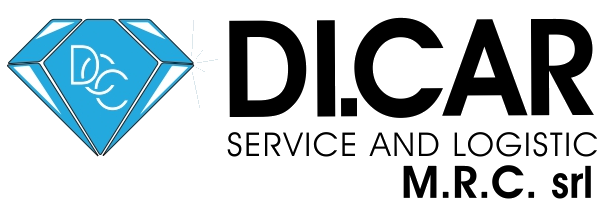Difference Between Direct Write Off Method and Allowance Method
Settembre 30, 2022Content
- When Can You Use the Direct Write-Off Method? – Introduction to the Direct Write-Off Method for Beginners
- Misunderstandings About the Direct Write-Off Method – Introduction to the Direct Write-Off Method for Beginners
- Advantages of using the direct write-off method
- Business
- What Type of Asset Is Bad Debt?
The sale occurred December 1st 2015 and has payment due in 60days, so at year end December 31st 2015 the account is not yet due. A customers account has a debit balance from a finance charge done in error. It was The Direct Write Off Method done in a prior year.How do you amend this debt without raising a credit note as there is nothing to offset credit note. As with every other entry we have completed, the first step is to identify the accounts.
The IRS requires the direct write off method because it believes otherwise businesses would use the allowance method and estimate a large amount of bad debt to lower their taxes. This writes off the specific uncollectible account, reducing both the accounts receivable and the allowance without affecting the bad debt expense at the time of write-off. The direct write-off method in accounting is based on the revenue recognition principle, which says that income should be recorded in the accounting books when earned. The revenue recognition principle says that when a debt can’t be paid back, the amount should be removed from the accounts receivable balance. The direct write-off method, a simple yet powerful tool in the accounting world, has been a lifesaver for many small businesses and startups dealing with credit sales. It’s a way to keep track of accounts, debts, or account balances that are not likely to be paid back.
When Can You Use the Direct Write-Off Method? – Introduction to the Direct Write-Off Method for Beginners
The specific action used to write off an account receivable under this method with accounting software is to create a credit memo for the customer in question, which offsets the amount of the bad debt. Creating the credit memo creates a debit to a bad debt expense account and a credit to the accounts receivable account. Allowance for Doubtful https://kelleysbookkeeping.com/ Accounts is a holding account for potential bad debt. If the company underestimates the amount of bad debt, the allowance can have a debit balance. If the company uses a percentage of sales method, it must ensure that there will be enough in Allowance for Doubtful Accounts to handle the amount of receivables that go bad during the year.
Therefore, the amount of bad debt expenses a company reports will ultimately change how much taxes they pay during a given fiscal period. The allowance for doubtful accounts nets against the total AR presented on the balance sheet to reflect only the amount estimated to be collectible. This allowance accumulates across accounting periods and may be adjusted based on the balance in the account. The direct write-off method waits until an amount is determined to be uncollectible before identifying it in the books as bad debt. Reporting revenue and expenses in different periods can make it difficult to pair sales and expenses and assets and net income can be overstated.
Misunderstandings About the Direct Write-Off Method – Introduction to the Direct Write-Off Method for Beginners
Generating a credit memo for the uncollectible debt will cause the bad debt expense account to be debited and the accounts receivable account to be credited. At the end of the accounting period, a bad debt expense is estimated and recorded in an adjusting entry. When using an allowance method, it is critical to know what you are calculating. If using sales in the calculation, you are calculating the amount of bad debt expense. If using accounts receivable, the result would be the adjusted balance in the allowance account.

The allowance method helps management better understand the risks and opportunities in their accounts receivable by considering how uncertain it is that they will be paid. With this information, a company can make smart decisions about its credit policies, efforts to collect debts, and other things that affect its financial performance. Under the direct write off method there is no contra asset account such as Allowance for Doubtful Accounts. This means that the balance sheet is reporting the full amount of accounts receivable and therefore implying that the full amount will be converted to cash. Reporting a bad debt expense will increase the total expenses and decrease net income.
Advantages of using the direct write-off method
It’s also important to note that unpaid invoices are categorized as assets, which are debited in accounting. The business is left out of pocket with “bad debt” to balance in the books. The direct write off method offers a way to deal with this for accounting purposes, but it comes with some pros and cons. GAAP mandates that expenses be matched with revenue during the same accounting period. But, under the direct write off method, the loss may be recorded in a different accounting period than when the original invoice was posted. Consider why the direct write-off method is not to be used in those cases where bad debts are material; what is “wrong” with the method?
- Using those percentages, the company can estimate the amount of bad debt that will occur.
- Because we identified the wrong account as uncollectible, we would also need to restore the balance in the allowance account.
- In March 2023, the business provides services to Customer A worth $1,000, recording it as an account receivable.
- The aging method is a modified percentage of receivables method that looks at the age of the receivables.
- Bad debt arises when a customer either cannot pay because of financial difficulties or chooses not to pay due to a disagreement over the product or service they were sold.
Since the unadjusted balance is $9,000, we need to record bad debt of $5,360. Materiality considerations permitted a departure from the best approach. It is a matter of judgment, relating only to the conclusion that the choice among alternatives really has very little bearing on the reported outcomes. The direct write-off method is easy to understand and doesn’t require a lot of paperwork, so it’s a good choice for these businesses.





